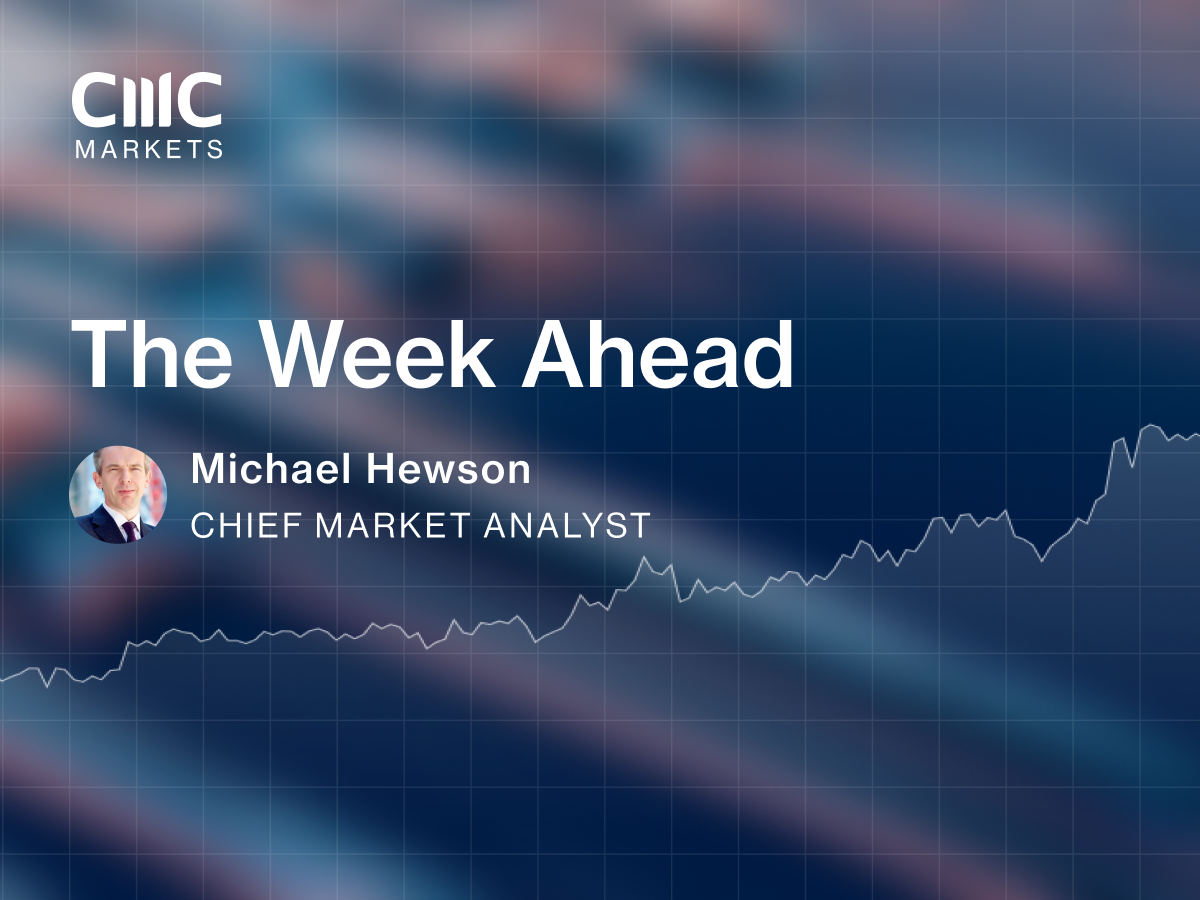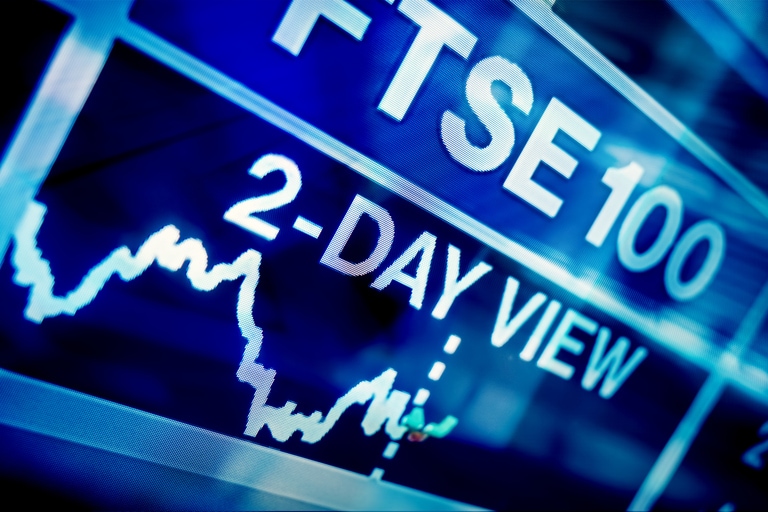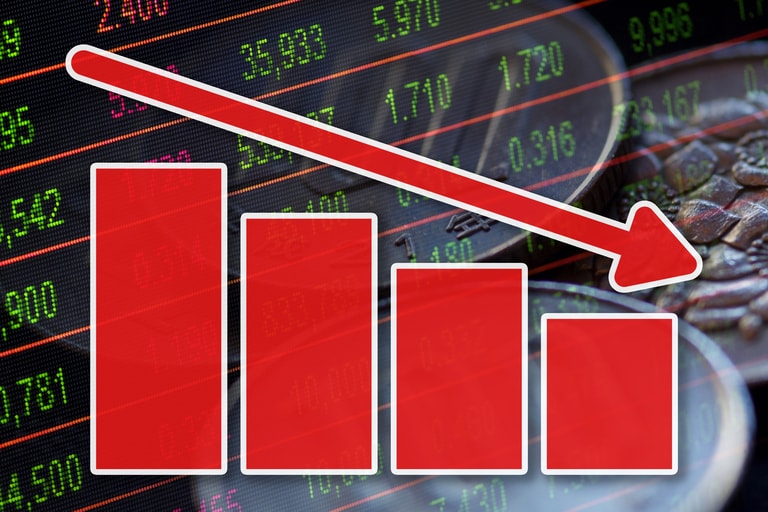The minutes from the US Federal Reserve’s 21-22 March meeting, due out on Wednesday, could reveal the extent to which policymakers considered pausing interest rate rises in the wake of the Silicon Valley Bank fallout. The coming week also serves up the latest reading of the US consumer price index (CPI), full-year results from British supermarket chain Tesco, and leading US banks’ first-quarter results.
Our top three economic and company events in order of importance are:
1. Wednesday – Fed minutes
Last month the Fed raised interest rates by 25 basis points to a range of 4.75% to 5%, despite the tumult caused by the collapse of Silicon Valley Bank. However, Fed chair Jay Powell’s press conference struck a dovish note as he said “some additional policy firming may be appropriate”. That marked a softening of the stance he took in February, when he said “ongoing increases in the target range will be appropriate”. This change of tone could give the Fed scope to pause rate rises at its next meeting in early May, if inflation continues to ease. While Powell’s comments may be a signal that the end of the tightening cycle is close, he also said that rate cuts this year were not being considered. A scan of the Fed’s dot plot – a chart that shows the Fed’s interest rate projections – confirms that rate cuts are unlikely to be forthcoming, even though markets continue to price them in.
The minutes from the Fed’s March meeting are likely to reveal how seriously policymakers considered the option of pausing rate hikes last month. They might also give a sense of whether members felt that maintaining rates risked startling markets, since a pause may have implied that the Fed was deeply concerned about turmoil in the banking sector. In sum, while the notes are sure to show a focus on the uncertainty caused by recent events, they are also likely to reaffirm the Fed’s commitment to letting the data guide their decisions.
2. Wednesday – US CPI (March)
Inflation in the US has been falling steadily since it peaked at 9.1% last June. The consumer price index rose 6% in the year to February, down from 6.4% in January, as inflation sank to its lowest level since October 2021. However, growth in core prices – which exclude food and energy costs – has proved somewhat persistent in recent months, stalling at 5.5% in the year to February, well above 2021 levels.
The slowdown in consumer price growth is encouraging given the pickup in consumer spending at the start of the year. Nevertheless, in some areas of the US economy inflation remains stubbornly high. Consensus estimates suggest that core CPI may have ticked back up to 5.6% in March, potentially dealing a blow to investors hoping that the Fed might keep rates on hold at its next meeting in May.
3. Thursday – Tesco full-year results
Tesco shares have risen more than 30% since dropping below 200p in early October, despite a profit warning back that month and pressure on margins. Tesco’s Q3 and Christmas statement, published back in January, showed that group like-for-like sales increased 5.7% during the quarter and were up 7.9% in the runup to Christmas. The UK and Ireland business saw sales grow 5.2% in Q3, while Central Europe posted growth of 12.3% over the same period. Booker, Tesco’s wholesale subsidiary, grew its Q3 sales by 9.3%. The January statement also reaffirmed Tesco’s full-year outlook, guiding an adjusted operating profit of between £2.4bn and £2.5bn.
Tesco remains Britain’s biggest supermarket by market share. The company held a 27.5% share of the UK grocery market as of 22 January, despite stiff competition from the likes of Aldi and Lidl. In the most recent Kantar sales survey, Tesco enjoyed 12-week sales growth of 6.9%. However, costs are also rising. With food price inflation running at record levels of 17.5%, a pay rise for Tesco staff that kicks in this month is likely to squeeze margins even further. That said, the recent fall in fuel prices may have helped cut the cost of deliveries.
More key events
Our calendar of selected economic and company announcements:
MONDAY 10 APRIL
No major scheduled events (UK and European markets closed for Easter Monday)
TUESDAY 11 APRIL
No major scheduled events
WEDNESDAY 12 APRIL
US CPI (March); Fed minutes
See our top three events, above
THURSDAY 13 APRIL
China trade balance (March)
The latest purchasing managers’ index (PMI) readings from China pointed to a pickup in service sector activity in March as the country’s economy revved back up after Chinese New Year and continued to recover from Covid lockdowns. In March the official services PMI surged to 58.2, up from 56.3 in February, reaching its highest level since 2011.
China’s trade balance improved in January and February after a sharp slowdown in the last two months of 2022, when coronavirus restrictions limited economic activity. Although import and export numbers kicked off 2023 in negative territory – as expected, since they came against the year-ago comparatives of a pre-lockdown economy – they were better than expected. Exports were down 6.8% year-on-year in the combined January-February period, while imports fell 10.2% year-on-year over the same two-month period.
The trade data for March could show a rebound in electric car sales according to news reports, suggesting that some consumers may have indulged in a bout of so-called “revenge spending”, or splashing out now that the economy has reopened. This trend could help boost the economy in the short term. For March, exports are expected to have declined 7.4% year-on-year, while imports are expected to be down 6.9%.
UK GDP (February)
The UK economy grew 0.1% in Q4, revised up from an initial estimate of no growth, as the country dodged a technical recession. Since then the economic data has shown further signs of improvement, particularly in the services sector. After a weak Q4, services PMI readings recovered in February and March. Meanwhile, retail updates show that consumer spending is picking up, even if shoppers continue to spend their money judiciously amid persistently high inflation.
In January the UK economy grew 0.3%, despite high inflation, as retail sales rose 0.9% month-on-month. In February, retail sales increased a further 1.2% on a monthly basis. Against this backdrop, a positive GDP number for February could increase the likelihood of a positive quarterly print to get 2023 off to a solid start.
Tesco full-year results
See our top three events, above
FRIDAY 14 APRIL
US retail sales (March)
After a strong start to the year US retail sales stalled in February, slipping 0.4% month-on-month. Sales had increased 3.2% month-on-month in January. Personal spending also slowed, rising 0.2% month-on-month in February after a 2% increase in January. Consumer confidence held up well last month, despite bank runs that saw some people shift funds from small US banks to bigger institutions.
Nevertheless, retail sales are expected to have declined 0.4% in March compared to February, even though the labour market remains resilient. The strong jobs market, and falling gasoline prices, may help support spending in other areas of the economy.
AO World Q4 results
Shares of electronics retailer AO World have fallen more than 85% since the record high of 443p set in January 2021, when lockdowns contributed to a surge in demand for electrical goods. The lifting of coronavirus restrictions inevitably led to a slowdown, leaving the Bolton-headquartered company struggling to cope as costs surged. The shares sank to a record low back of 39p in August last year.
Since then we’ve seen a slow recovery, the shares rising to around 63p on the back of two guidance upgrades, the first of which – in January – saw the full-year EBITDA forecast increased to between £30m and £40m. The focus for the business is on reducing costs as revenue is set to fall 17.2% from last year. In March EBITDA guidance was raised again, this time to between £37.5m and £45m, with management citing further margin improvements.
JPMorgan Chase Q1 results
It’s been a difficult quarter for US banks with the collapse of Silicon Valley Bank, Signature Bank and the attempts to stabilise the regional banking sector in the US. When JPMorgan reported its Q4 results in January the bank painted a cautious outlook for the US economy, despite a strong end of year showing. The headline number saw a beat of $35.57bn in revenues, while profits came in at $3.57 a share, or $11bn. Digging into the details, investment banking and FICC and sales trading came in below expectations at $1.39bn and $3.74bn, respectively, while equities also came in light at $1.93bn, against a forecast of $1.98bn. Higher interest rates helped boost net interest income by 48% to $20.3bn, and it is here where we’ve seen the real revenue and profit gains.
Higher rates appear to have come at a cost elsewhere in the US banking system. The effects may continue to be felt over the rest of this year. JPMorgan set aside a rather large reserve of $1.4bn as in credit costs increased to $2.3bn on the back of a deterioration in the economic outlook, with the bank saying that they have a baseline assumption of a mild recession. These concerns can only have risen further in light of recent events.
The main focus this US bank earnings season will be on how much the recent turmoil has hit the sector’s profits, not only in terms of the impact of loan demand but also in terms of deposit inflow. A lot of SVB’s clients moved their funds to JPMorgan and other US banks following the collapse. JPMorgan’s profit for Q1 is expected to come in at $3.40 a share.
Citigroup Q1 results
Citigroup’s share price slipped towards its October low amid the tumult in the US banking sector in March. Like its rival JPMorgan, Citigroup is likely to report a jump in deposit inflow as US customers steered their funds towards the bigger and safer US banks.
The share price has undergone a modest recovery over the last couple of weeks, but the gains have been limited. When the bank reported in Q4 it echoed its peers by warning on the various risks to the outlook. Revenue in Q4 beat expectations, coming in at $18bn, a rise of 6%, although profit came in short at $1.16 a share, below an expected $1.30 a share, and a 21% decline from a year ago. FICC was better than expected at $3.16bn, but that was overshadowed by steep falls in equities trading revenue which fell back by 22% from Q3 to $789m. Investment banking was also disappointing, down 58% from a year ago at $645m. In line with its peers Citigroup added another $640m to its reserves, as the bank booked $1.18bn in loan losses during the quarter. Profit in Q1 is expected to come in at $1.17 a share.
Wells Fargo Q1 results
Wells Fargo, the fourth biggest US bank by total assets, is also likely to have seen increased deposit inflow as a result of the recent turbulence in the US banking sector. A much more domestically focused bank, Wells Fargo’s shares suffered a bigger decline than those of its peers on the back of the recent turmoil, sliding to two-year lows before rebounding.
Back in January the bank reported a disappointing set of Q4 numbers, but this was expected by some due to various legacy issues around litigation and regulatory issues. Q4 revenue fell short at $19.66bn, while the bank incurred losses of $3.3bn during the quarter. Stripping that away, profits came in at $0 67 a share, or $2.86bn. Net interest income was solid, up 11% on the previous quarter and up 45% from the same period last year at $13.4bn. Home lending, one of the bank's core businesses, decreased by 57% due to higher interest rates and a more challenging housing market.
On the outlook there were concerns around consumer credit as delinquency rates edge higher, while write-offs rose to $525m. Across the whole business the company added a total of $957m in respect of additional provisions. Operating costs also rose to $16.2bn. Profit for Q1 is expected to come in at $1.14 a share.
INDEX DIVIDEND SCHEDULE
Dividend payments from an index's constituent shares can affect your trading account. View this week's index dividend schedule.
SELECTED COMPANY RESULTS
| MONDAY 10 APRIL | RESULTS |
| iMedia Brands (US) | Q4 |
| PriceSmart (US) | Q2 |
| TUESDAY 11 APRIL | RESULTS |
| Albertsons Companies (US) | Q4 |
| CarMax (US) | Q4 |
| Skillsoft (US) | Q4 |
| WEDNESDAY 12 APRIL | RESULTS |
| Apogee Enterprises (US) | Q4 |
| Argentex (UK) | Full-year |
| Everyman Media Group (UK) | Full-year |
| Rent the Runway (US) | Q4 |
| THURSDAY 13 APRIL | RESULTS |
| Fastenal (US) | Q1 |
| Lakeland Industries (US) | Q4 |
| LSL Property Services (UK) | Full-year |
| Tesco (UK) | Full-year |
| FRIDAY 14 APRIL | RESULTS |
| AO World (UK) | Q4 |
| Citigroup (US) | Q1 |
| JPMorgan Chase & Co. (US) | Q1 |
| PNC Financial Services (US) | Q1 |
| UnitedHealth Group (US) | Q1 |
| Wells Fargo & Co. (US) | Q1 |
Note: While we check all dates carefully to ensure that they are correct at the time of writing, company announcements are subject to change.
CMC Markets erbjuder sin tjänst som ”execution only”. Detta material (antingen uttryckt eller inte) är endast för allmän information och tar inte hänsyn till dina personliga omständigheter eller mål. Ingenting i detta material är (eller bör anses vara) finansiella, investeringar eller andra råd som beroende bör läggas på. Inget yttrande i materialet utgör en rekommendation från CMC Markets eller författaren om en viss investering, säkerhet, transaktion eller investeringsstrategi. Detta innehåll har inte skapats i enlighet med de regler som finns för oberoende investeringsrådgivning. Även om vi inte uttryckligen hindras från att handla innan vi har tillhandhållit detta innehåll försöker vi inte dra nytta av det innan det sprids.






